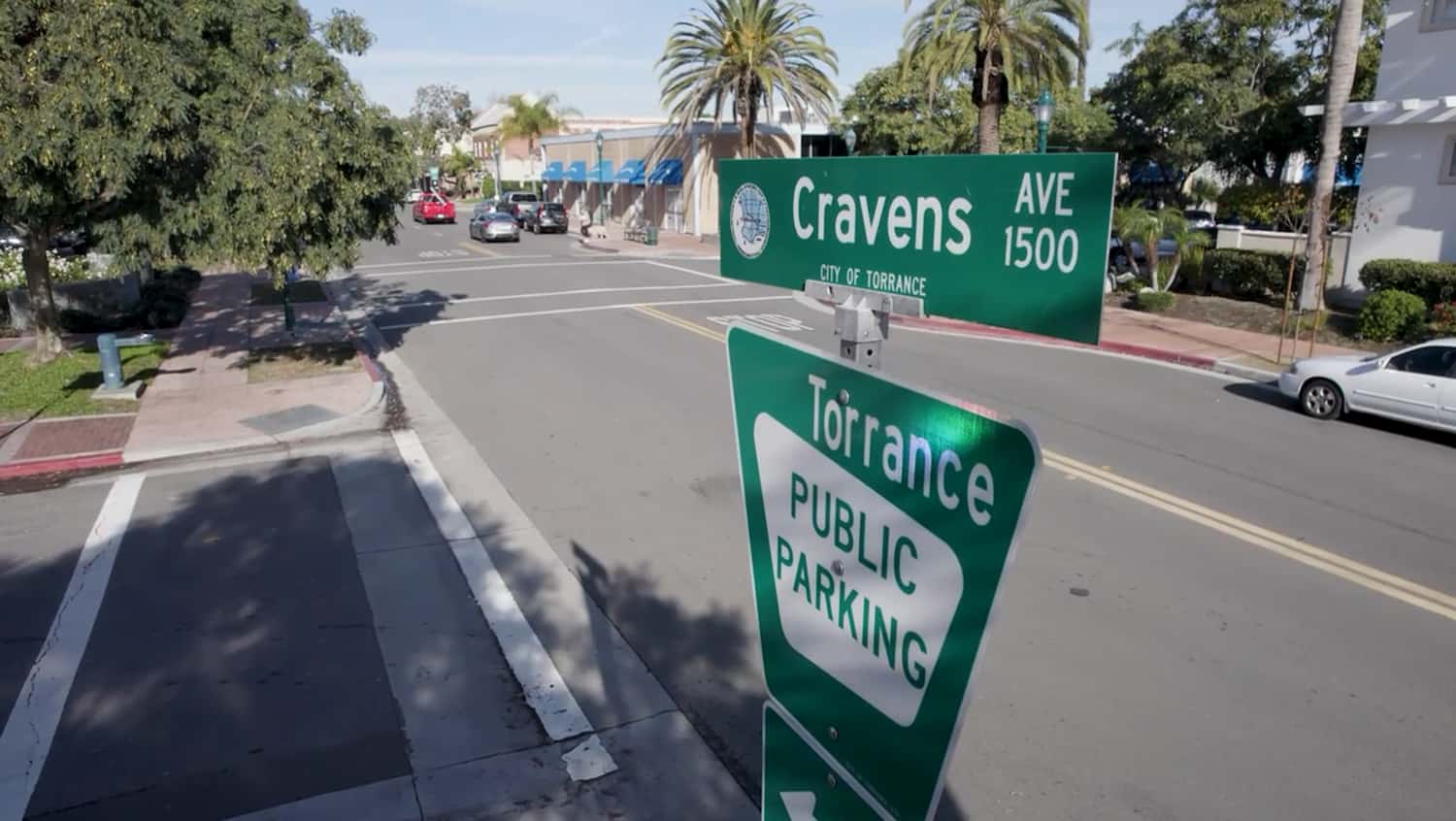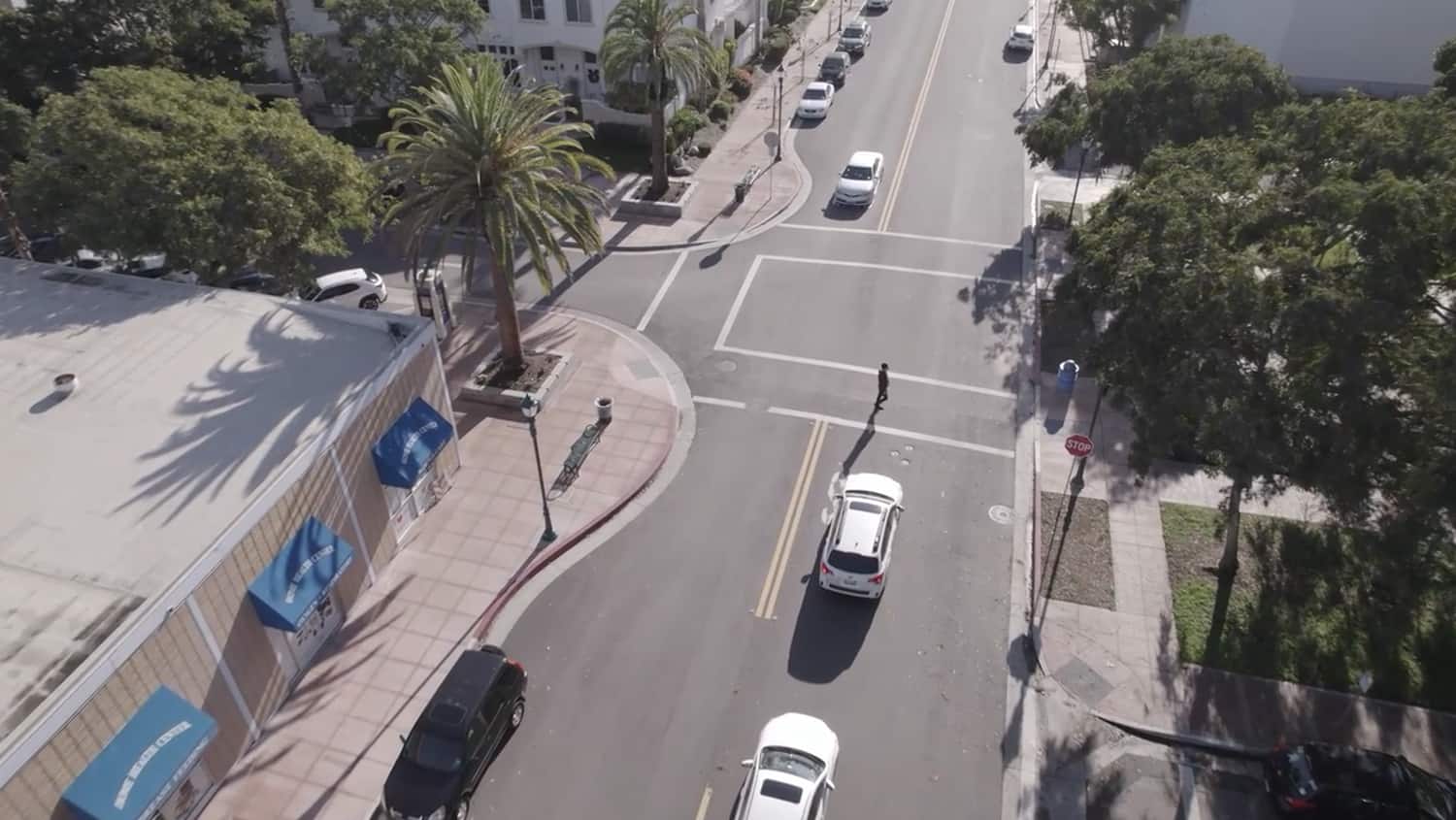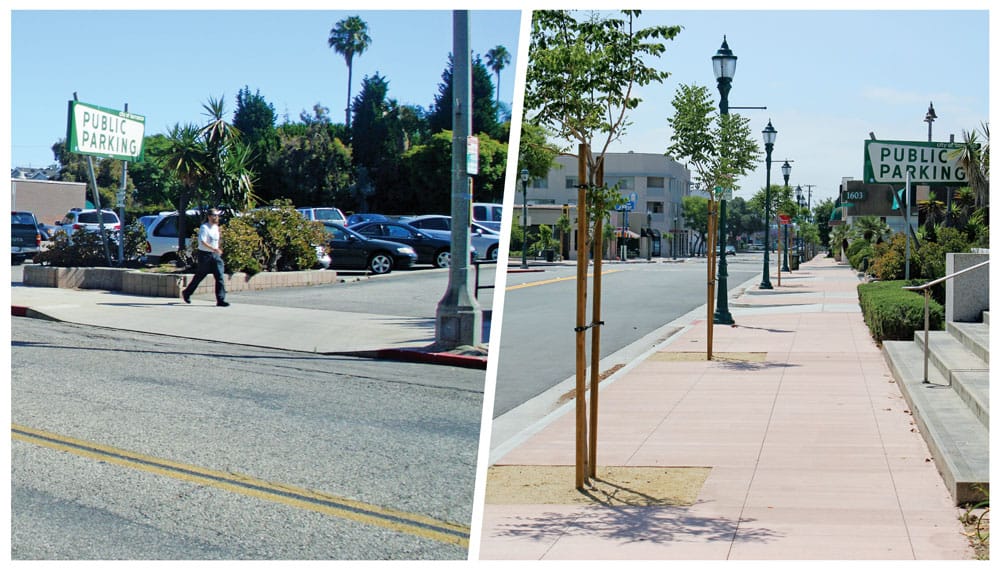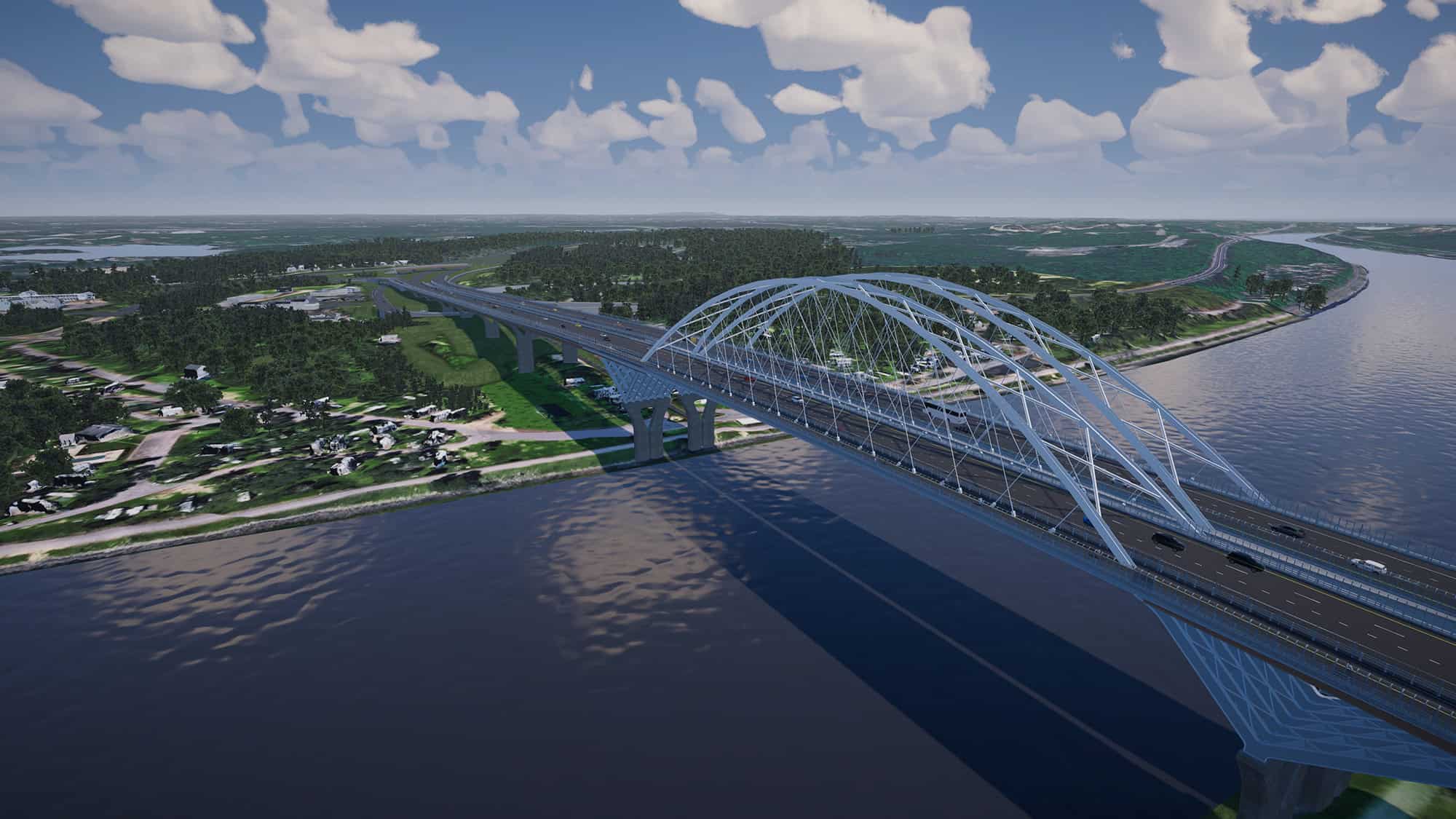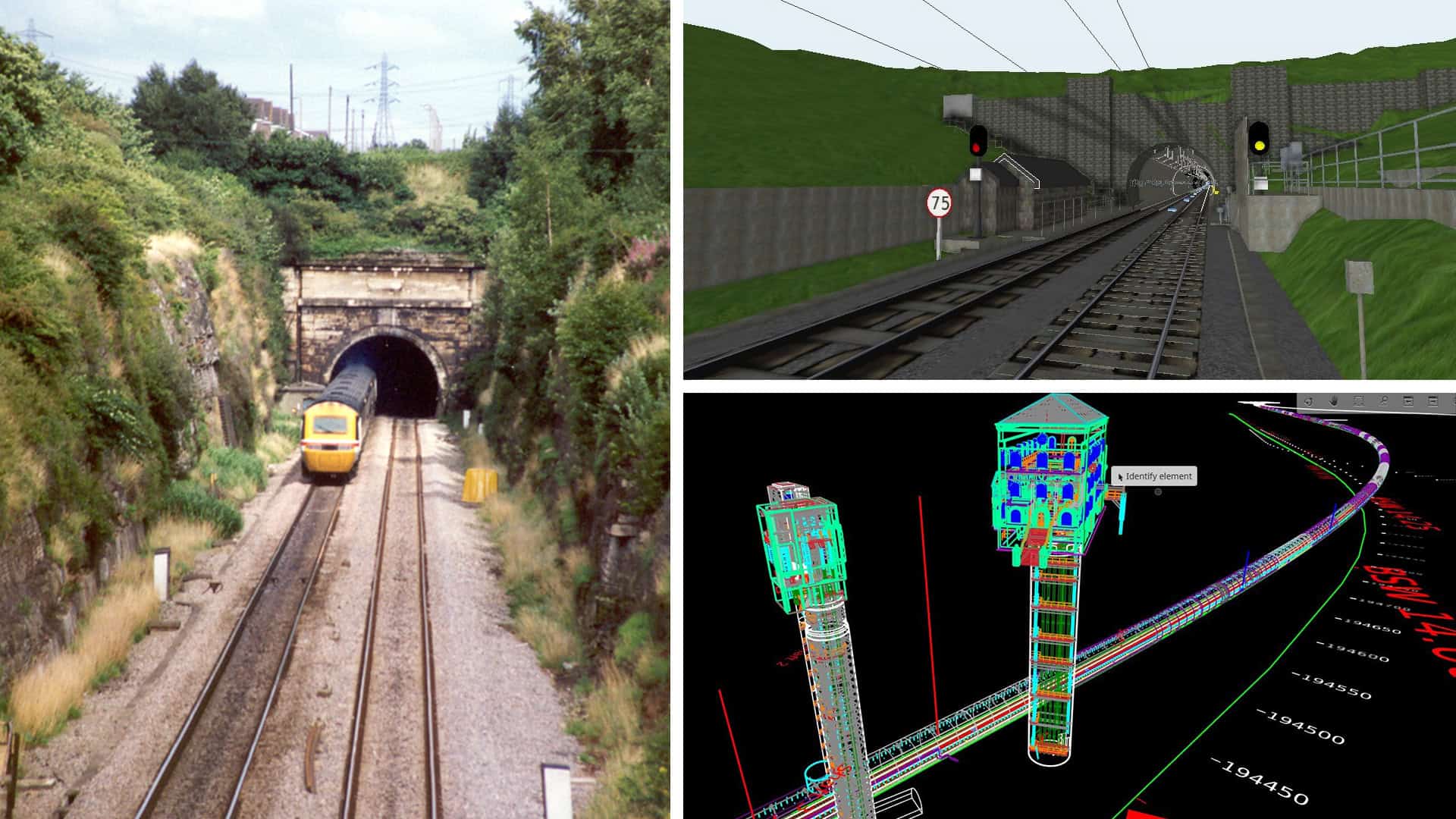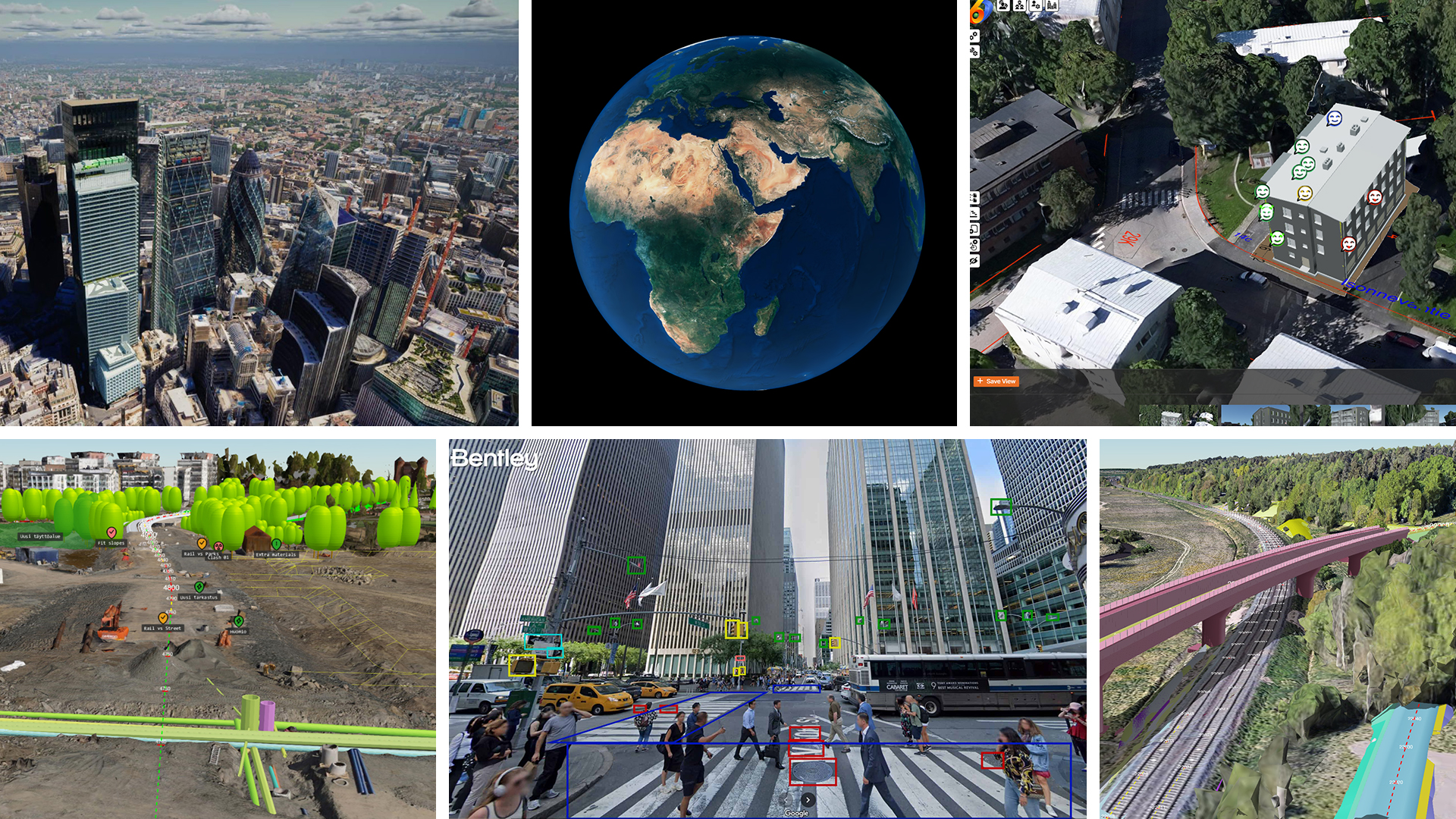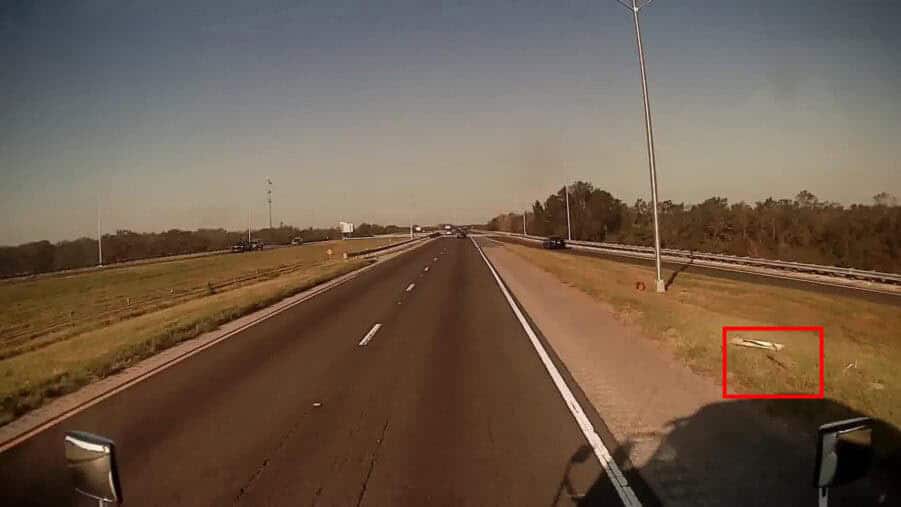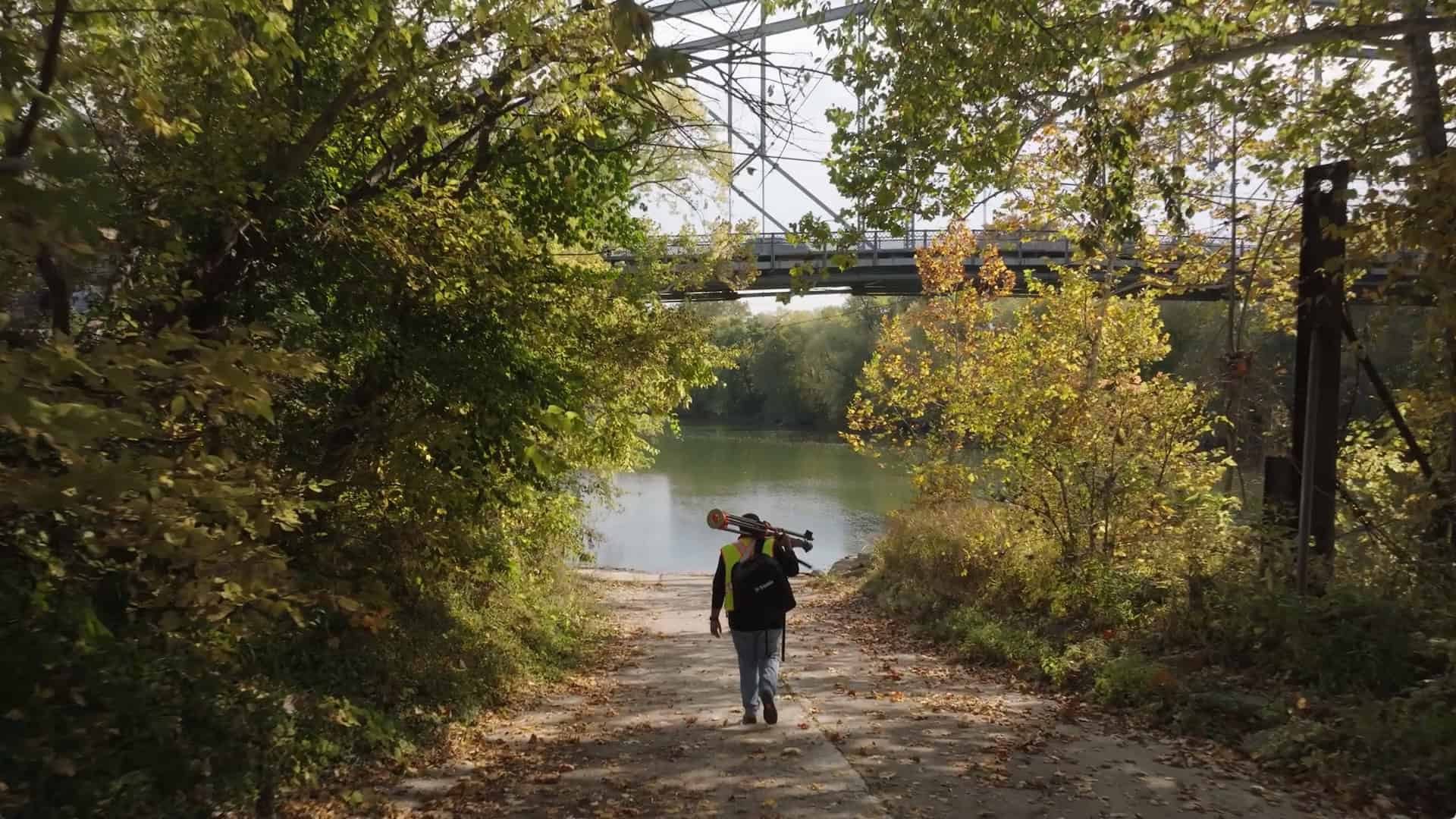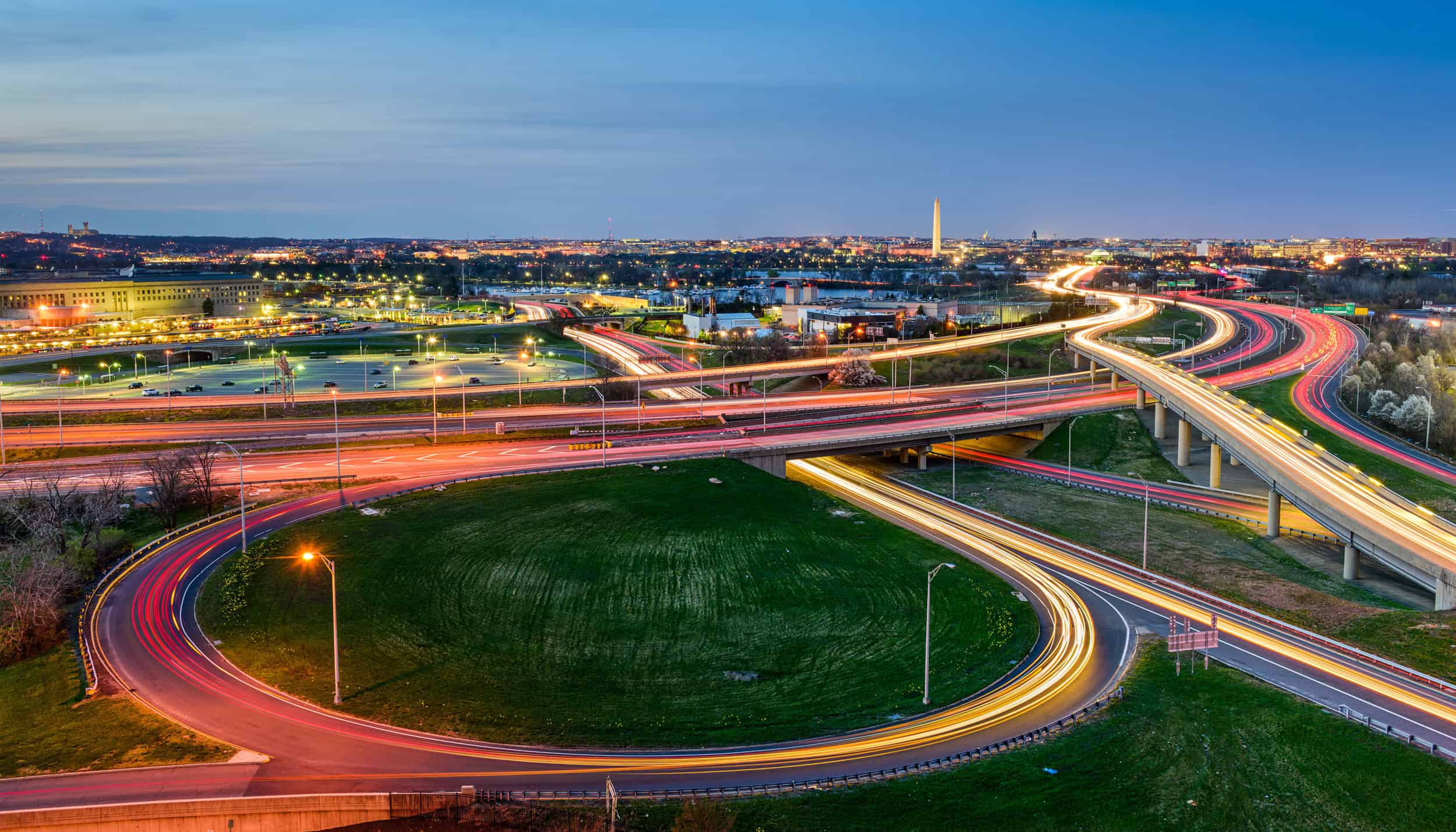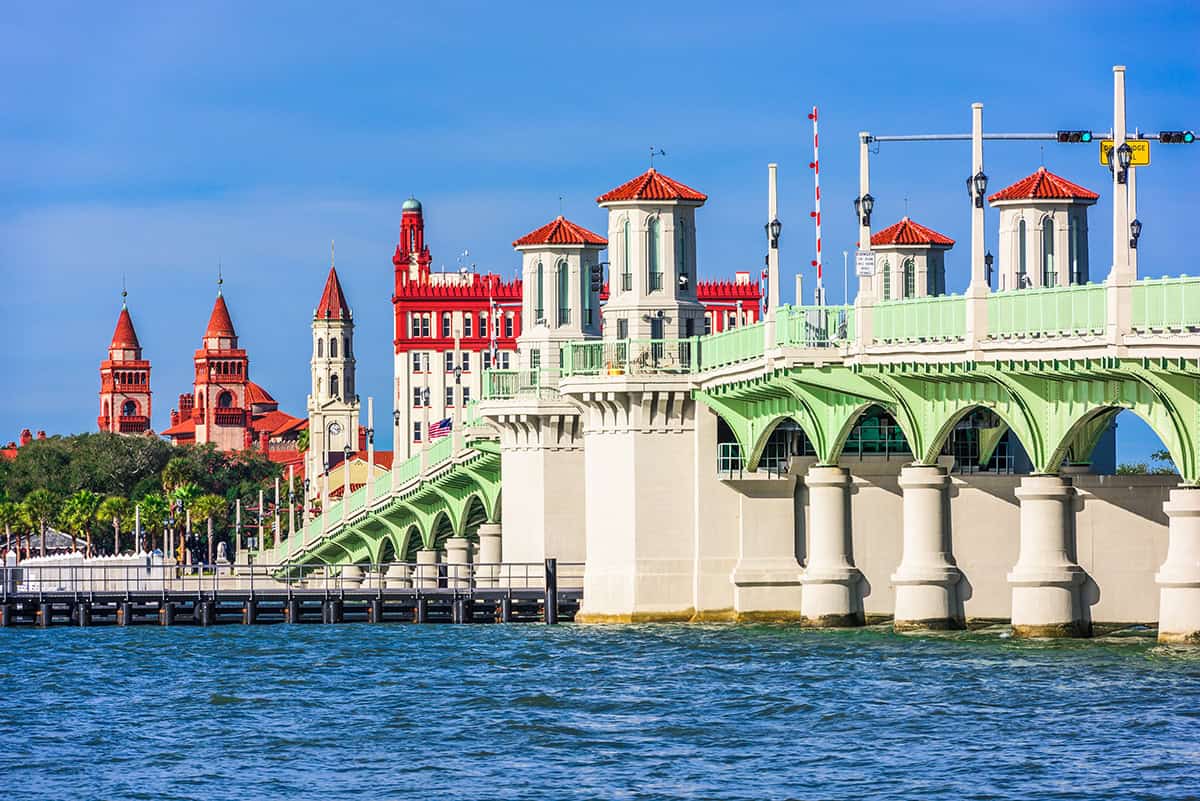Redeveloping a downtown area doesn’t have to involve attracting big box stores or building expensive new structures. JMC2 Engineering discovered they could restore the faded downtown of Torrance, Calif. to newfound life through intelligent street, sidewalk, and fixture design. They used digital modeling to create a Complete Streets Design, which improved accessibility, retained historic elements, and provided an inviting space that has improved foot traffic and brought in new business.
Torrance, a coastal city in the South Bay region of the Los Angeles metro area, was established as a planned community in 1912. Among the original developers of Torrance was Landscape Architect and City Planner, Frederick Law Olmsted, Jr., who previously completed numerous park systems and greenways across the country and put together a statewide survey of potential park lands in California that provided guidance for the development of the state’s parks.
Olmsted and his collaborators designed the city’s downtown area, including the distinctive buildings that blend mission revival and early modernist architecture. Frank Lloyd Wright, Jr., the now-legendary architect and designer, assisted with the landscaping. The result was the heart of a thriving, picturesque community, with Cravens Avenue serving as a major artery. As the decades passed and the community grew well beyond the original borders, the downtown area became known as Old Torrance, and it continued to prosper with numerous shops and businesses. Laurie Latham Brandt, a longtime resident of Torrance and owner of Red Car Brewery and Restaurant, remembers the area’s peak years.
“There is so much history here. This area really was the hustle and bustle of the city of Torrance,” she said.
A Community Draw No Longer
By the 1980s, development in the area had long spread to other areas, and Old Torrance deteriorated, particularly along Cravens Avenue, said Aurelio Mattucci, a member of the Torrance City Council.
“Cravens Avenue was one of those streets in the downtown area that was dilapidated and kind of forgotten,” he said.
Longtime business owners, including Kirk Rossberg, owner of Torrance Bakery, which has been a staple in the community since 1984, noticed the beauty of the area had started to fade.
“When I first got here, the place was kind of a dump. Downtown Torrance, once so beautiful, was deteriorating and had a lot of empty stores,” he said.
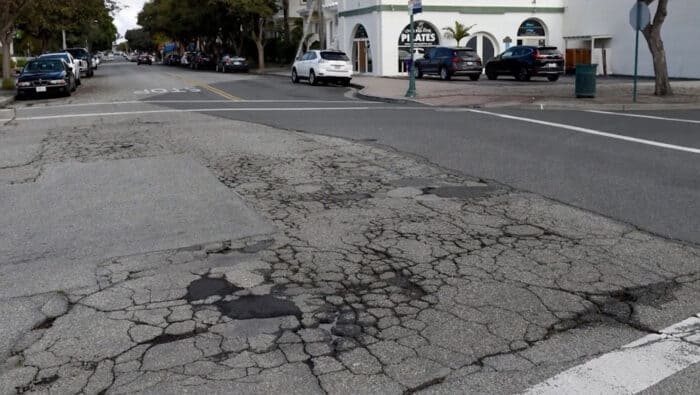 Section of deteriorating roadway along Cravens Avenue before the revitalization project.
Section of deteriorating roadway along Cravens Avenue before the revitalization project.Over the years, Cravens Avenue developed numerous drainage issues, as the flat surface area frequently retained water that did not easily move to drains. And as the road and sidewalk deteriorated, they became irregular surfaces that could not easily accommodate visitors with disabilities. The Americans with Disabilities Act (ADA), passed in 1990, prohibits discrimination based on disability. The sweeping law also enacted accessibility standards for public accommodations, which include curb ramps, pedestrian crossings with detectable warnings such as audio tones, and obstruction-free sidewalks – all features Old Torrance lacked, as the area was designed long before ADA passed.
To remedy the situation, the City of Torrance initiated a major facelift of the area, called the Downtown Pedestrian Beautification Project, and tapped JMC2 Engineering for its design. The project completely rebuilt all driveways, sidewalks, drainage systems, water lines, and lighting along a half-mile stretch of Cravens Avenue. The goal was to design the project around community needs and make the Craven Avenue area into an inviting, walkable space that would blend into other historic areas of Old Torrance. Additionally, JMC2’s work on the redevelopment brought the road and all access points up to current ADA standards by providing safe crosswalks, wayfinding, and code-compliant functionality.
Though the size of the project was relatively small at $3 million (USD), JMC2 had to navigate numerous requirements and details. Their work had to incorporate many historical elements, such as Prado Park, that could not be altered. Since the city wanted to prevent future rework on the street, they had to plan updates to the network of underground utility pipes. JMC2 needed an accurate, efficient way to plan the project.
Planning a Complete Streets Design with Digital Models
JMC2’s vision for an accessible, inviting downtown area required a detailed digital model to help with the planning. To bring the street up to current ADA standards, the design team needed a highly accurate 3D design model. The digital replica of the project was used to determine the scope of the work needed and how to seamlessly blend new work with existing elements, said John Cruikshank, president and CEO of JMC2 Engineering. “We needed a digital model to analyze and plan the joining of sidewalks to old building thresholds and to add ADA curb ramps at every street corner,” he said.
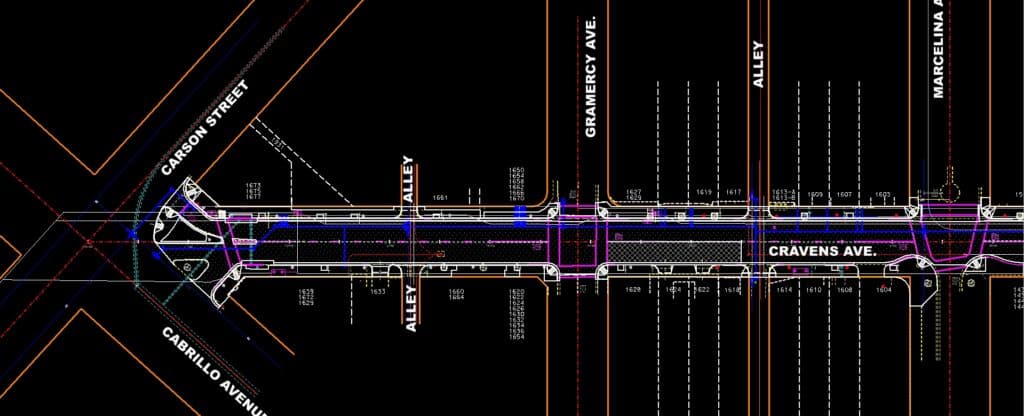 Basemap of Cravens Avenue generated with Bentley’s MicroStation.
Basemap of Cravens Avenue generated with Bentley’s MicroStation.JMC2 created the digital model by undertaking detailed field surveys of the project site, then importing that data into OpenRoads Designer. With a clear view of the entire area, the design team then determined what work was needed from the comfort of their office or the field.
By using Bentley’s OpenRoads and MicroStation solution, JMC2 created designs of all surface-level work to be carried out. For modeling water flow and pipe sizing, JMC2 used Bentley’s OpenFlows to produce a digital twin of the replacement water system along the half-mile stretch of Craven Avenue under redesign. Cruikshank said the city of Torrance had high standards for the work, and was especially particular how under-walk drains, driveways, ramps, utility vaults, alley aprons, door entryways, and trees were shown on the plans. Replicating these elements in a digital model improved communication between teams and gave the city of Torrance the confidence that JMC2 was living up to the project’s vision.
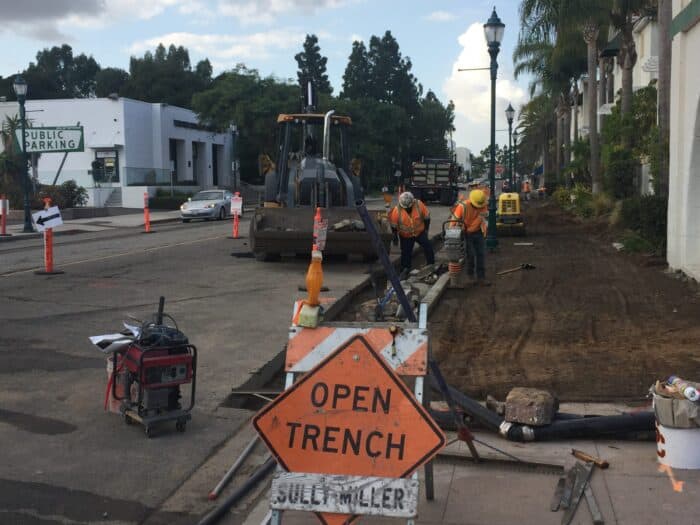 Road construction crews working on a trench along Cravens Avenue as part of the city’s Complete Streets improvement project.
Road construction crews working on a trench along Cravens Avenue as part of the city’s Complete Streets improvement project.Throughout the process, JMC2 worked to ensure every part of the project lived up to ADA requirements and ensured accessibility for all. They quickly discovered the work went beyond simply installing curb ramps. The team and the city’s arborist discovered that to eliminate tripping hazards, all large trees adjacent to sidewalks needed to be removed, as their roots frequently pushed up parts of the sidewalks and created irregular surfaces. The team planted new trees in their place, using five-square-foot tree wells to protect the sidewalks from damage as the trees grow.
Visualizing elements and refining options in the digital model also helped JMC2 determine how to update the network of utility pipes and connect them to existing parts of the system, as well as to prevent drainage problems. Beyond finding ways to improve water flow, their work within the digital model helped them coordinate and optimize the connections between Cravens Avenue and intersecting streets, Cruikshank said.
“With the number of side streets that come in, their profiles need to match [the level of Cravens Avenue], he said. “If one part of the profile comes in higher, that creates a drainage issue.”
A Renewed Neighborhood for All
Digital design helped JMC2 deliver a redevelopment plan that blended the accessibility and convenience of a modern-day complete streets design with the look and feel of the past. Not only did the redevelopment seamlessly incorporate the historic elements, new elements were specifically designed to match the aesthetics of the rest of Old Torrance such as the historic streetlamps and the colored concrete which were designed over 100 years ago. All sidewalks are now connected to existing building thresholds, and ADA-compliant curb ramps are on every street corner. As a bonus, the digital design allowed all team members to continue their work when the COVID-19 pandemic forced everyone to work remotely. Even with the complexity and detail of the project, JMC2 finished their design 20% ahead of schedule and saved $50,000.
WATCH: Going Digital with JMC2 and the City of Torrance
The finished project has brought renewed attention to the once-overlooked area, Councilmember Mattucci said.
“Doing this project really brought a whole new look to the neighborhood, which is going to bring in new businesses and shoppers,” he said. Adding that JMC2’s work on Cravens Avenue improved cleanliness and safety in the area, and has set the tone for continued revitalization of the surrounding areas.
Thanks in part to JMC2’s revitalization, Old Torrance is now home to an array of attractions and shops, including a local history museum, a store devoted to dollhouses and accessories, antique stores, a monthly flea market, outdoor festivals, and the Red Car Brewery, owned by Brandt and her husband.
The Cravens project was a catapult to making Old Torrance into a walkable area, recalled Brandt. Wanting to create a place to gather in their hometown, they opened the Red Car in a building that once housed the Pacific Telephone and Telegraph Company. The newly accessible and attractive road and neighborhood staging encourage a growing number of visitors.
“Since the redevelopment, the city, and the downtown Torrance Association have leveraged the project to bring people to the area with several special events,” said Brandt. “[Such as] the “Scaredown in Downtown” at Halloween and a Holiday stroll which brought in over 500 people to visit the neighborhood and shop.”
The revitalization has helped businesses by making the area more neighborhood friendly with improved walkability and bike safety, said Torrance Bakery owner, Kirk Rossberg. The improved foot traffic has benefitted both old and new businesses, adding, “having the area ADA compliant has improved access for everyone – and is really the frosting on the cupcake.”
“This project on Cravens Avenue has started the whole blueprint of what the downtown should be and will be in the next few years,” Mattucci said.

